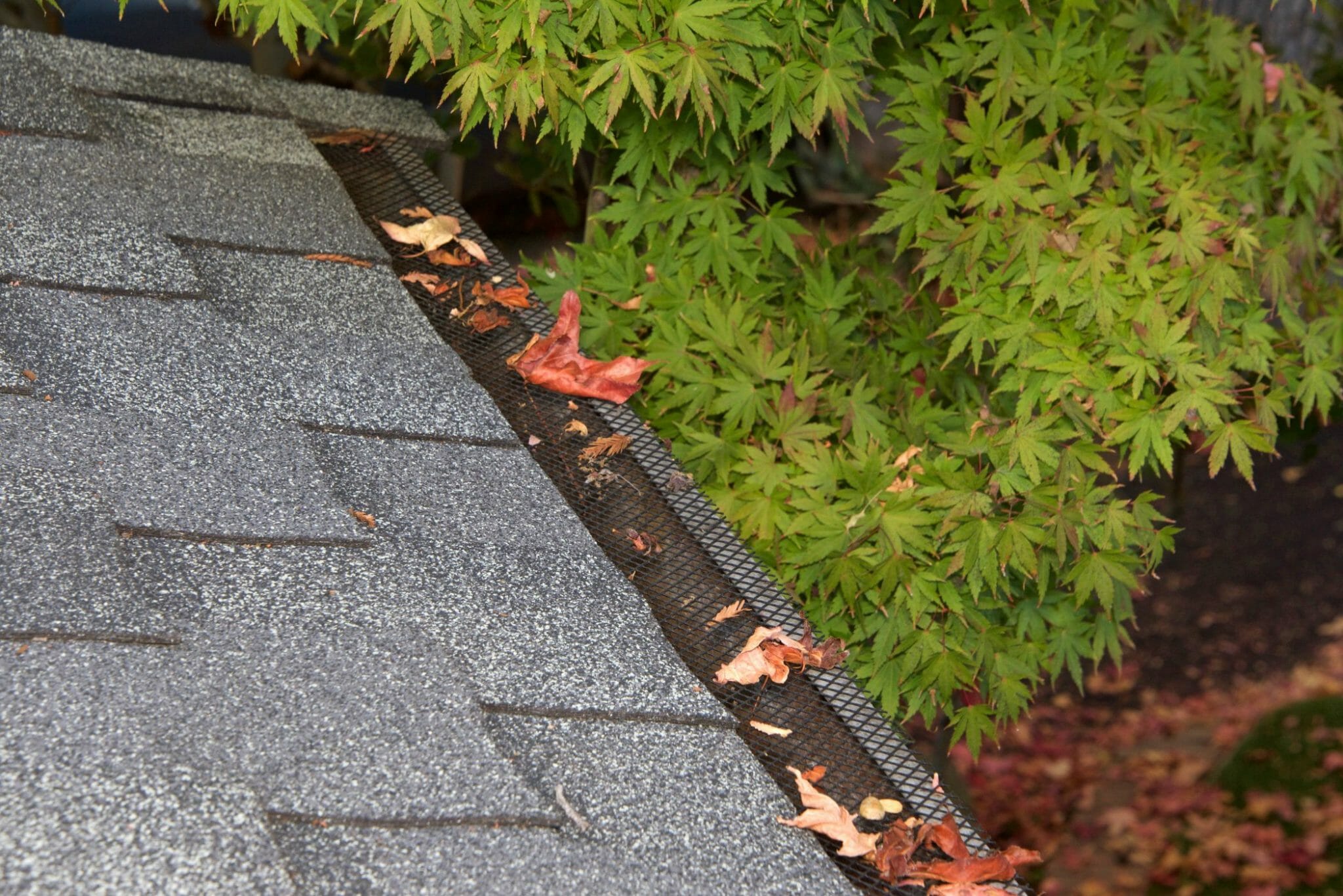If your home is surrounded by trees, you’re likely all too familiar with the seasonal struggle of clogged gutters. Fallen leaves, twigs, seeds, and even small branches can quickly accumulate in your gutter system, leading to blockages, overflow, and potential water damage. Fortunately, gutter guards offer a practical solution to this problem, helping to keep your gutters clear of debris while ensuring that rainwater can flow freely.
In this article, we’ll explore how gutter guards work, why they’re particularly beneficial for homes with nearby trees, and what to consider when choosing the right gutter guards for your property.
What Are Gutter Guards?
Gutter guards are protective covers that sit on top of your gutters, preventing debris from entering while allowing rainwater to flow through. There are several types of gutter guards, each designed to address different types of debris and environmental factors. Gutter guards can make a significant difference in reducing the frequency of gutter cleaning and preventing the costly damage that clogged gutters can cause.
For homes with trees nearby, gutter guards are especially valuable because they help minimize the impact of falling leaves, twigs, seeds, and pine needles, all of which are common gutter-clogging culprits.
Why Are Gutter Guards Important for Homes with Nearby Trees?
Homes with trees nearby are more prone to gutter debris due to the increased amount of organic material falling from the branches. Tree debris can cause several issues if left unchecked:
- Clogged Gutters: A build-up of leaves, twigs, and seeds in gutters can block water flow, causing overflow. This leads to water damage to the roof, siding, and foundation of your home.
- Pest Problems: Stagnant water in clogged gutters creates a breeding ground for pests like mosquitoes. Over time, debris can also attract rodents and insects.
- Roof and Gutter Damage: The weight of wet debris can pull gutters away from the roofline, or cause gutters to sag, creating structural issues.
- Increased Maintenance: Regular gutter cleaning can be time-consuming and dangerous, especially when working on a ladder to reach gutters that are high off the ground.
By installing gutter guards, you can mitigate these issues by significantly reducing the amount of debris that enters your gutters and minimizing the need for frequent cleanings.

Types of Gutter Guards for Homes with Trees
Not all gutter guards are created equal. When selecting the right gutter guard for your tree-heavy property, consider the type of debris that typically accumulates in your gutters and the level of maintenance you’re willing to perform. Here are some of the most popular types of gutter guards that work well for homes with nearby trees:
1. Mesh Gutter Guards
Mesh gutter guards feature fine screens that allow water to pass through while blocking leaves, twigs, and other debris. Mesh guards are especially effective for homes with deciduous trees, which drop large amounts of leaves in the fall.
- Pros: These guards are versatile and work well for various types of debris. They’re also easy to install and clean.
- Cons: While mesh guards are effective at filtering debris, smaller particles like pine needles can still slip through, so periodic cleaning may be necessary.
- Best For: Homes with medium-sized trees and moderate leaf fall.

2. Leaf Filter Gutter Guards (Surface Tension Guards)
Leaf filter guards work using the principle of surface tension. Water flows across the guard’s surface and into the gutter, while debris is directed to the edge of the guard and falls off. This type of guard is highly effective at keeping debris out of the gutter and doesn’t require frequent cleaning.
- Pros: These guards are nearly maintenance-free and are excellent at filtering out even the smallest debris, such as pine needles.
- Cons: They tend to be more expensive compared to other types of gutter guards and may require professional installation.
- Best For: Homes with trees that drop small debris, such as pine needles, seeds, and fine leaves.
3. Foam Gutter Guards
Foam gutter guards fit directly inside the gutter, creating a porous barrier that allows water to flow through while preventing larger debris from accumulating. These guards are particularly useful for homes surrounded by trees with lots of leaves.
- Pros: Foam guards are relatively inexpensive, easy to install, and effective at preventing larger debris from collecting in gutters.
- Cons: Smaller debris such as pine needles can get stuck in the foam, and the foam itself can deteriorate over time.
- Best For: Homes with trees that drop a lot of leaves but not smaller debris like pine needles.
4. Brush Gutter Guards
Brush-style gutter guards look like long, cylindrical brushes that fit into the gutter, with bristles that keep debris from settling while allowing water to flow through. These are particularly effective at preventing leaves and twigs from clogging the gutters.
- Pros: Brush guards are simple to install and provide excellent protection from large debris like leaves and twigs.
- Cons: Small debris such as pine needles and seeds can get trapped between the bristles, requiring periodic cleaning.
- Best For: Homes with trees that drop large leaves and twigs.
5. Solid Gutter Covers
Solid gutter covers, also known as leaf covers, are the most comprehensive type of gutter guard. These covers fit over the top of your gutters and are designed to prevent nearly all types of debris from entering the system. They often come with a slanted or curved design that directs water into the gutter while allowing debris to slide off.
- Pros: Solid covers are highly effective at keeping out nearly all debris, including leaves, twigs, and even smaller particles like pine needles.
- Cons: These guards are generally more expensive and may require professional installation.
- Best For: Homes with significant tree coverage or properties surrounded by trees with small, needle-like leaves.
What to Consider When Choosing Gutter Guards for Homes with Nearby Trees
When selecting gutter guards for your home, there are a few factors to consider to ensure you make the best choice:
- Type of Trees on Your Property: If you have trees that drop large leaves, mesh or brush guards may be sufficient. For homes with pine trees or smaller debris, a surface tension guard or solid cover might be a better option.
- Maintenance Needs: Some gutter guards are virtually maintenance-free, while others require periodic cleaning. If you prefer a low-maintenance solution, look for guards that minimize the need for upkeep.
- Cost: While some gutter guards are affordable and easy to install, others come with a higher price tag and may require professional installation. Factor in your budget when choosing the right solution for your home.
- Weather and Debris Volume: If your area experiences heavy rain or snow, you’ll need gutter guards that can handle the increased water flow. Additionally, areas with lots of tree coverage may require more robust guards to handle larger volumes of falling debris.
Benefits of Gutter Guards for Homes with Nearby Trees
- Reduced Gutter Cleaning: Gutter guards dramatically reduce the frequency of cleaning by preventing leaves and twigs from entering your gutters.
- Protects Your Home’s Foundation: By preventing clogged gutters, guards ensure that water flows properly, reducing the risk of water damage to your foundation, roof, and siding.
- Improves Gutter Longevity: By minimizing the build-up of debris, gutter guards help extend the life of your gutters by preventing rust, corrosion, and sagging.
- Prevents Pest Infestations: Gutter guards prevent debris accumulation, which reduces the likelihood of pests such as mosquitoes, rodents, and insects nesting in your gutters.
Conclusion
For homes surrounded by trees, installing gutter guards is a smart investment that can save time, effort, and money in the long run. Gutter guards provide an efficient way to prevent tree debris from clogging your gutters, ensuring proper water flow and protecting your home from water damage. By choosing the right type of guard based on the trees near your home, you can enjoy a low-maintenance gutter system that will keep your home safe and secure, no matter the season.
